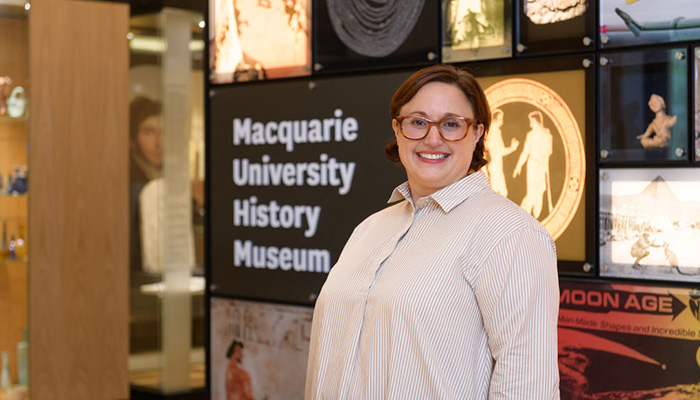Macquarie University resides within the Lane Cove catchment, and the Lane Cove River is just a short stroll from campus. This valley is a valuable corridor of native vegetation, and perhaps surprisingly, is home to a considerable number of rare and endangered species.
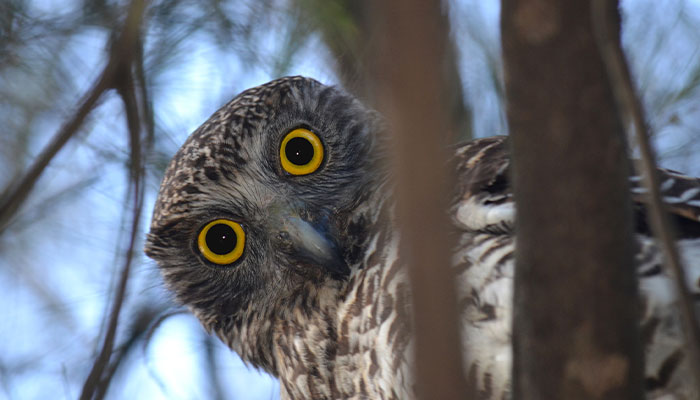
Hunter: The Powerful Owl.
If you are walking through these bushland valleys, here are some threatened and endangered species that you might be lucky enough to find.
The Powerful Owl is Australia’s largest owl. There are perhaps only 5000 of these birds in the wild, but the good news is that they seem to adapt to urban environments quite well. In particular, they like the fingers of bushland that run up small creeks in areas like the Lane Cove Valley.
You can often identify where these owls roost during the day by the wide circle of white droppings on the ground beneath them. Look around this ‘paint’ (as owl-watchers call it), and you may see the bones of possums that the owls hunt.
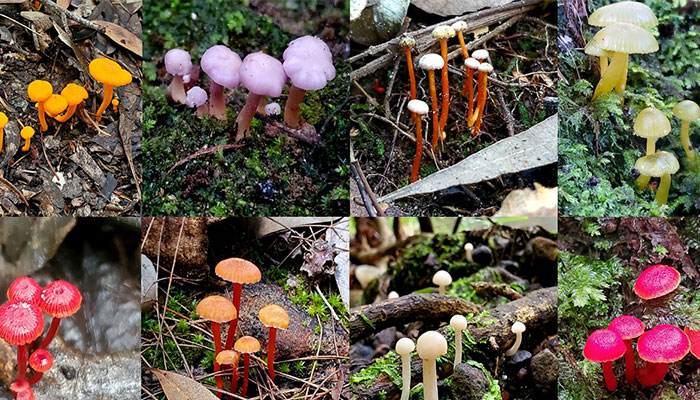
Habitat loss: Waxcaps in the Lane Cove Valley. Picture credit: Vanessa McPherson and Michael Gillings.
Waxcaps are small, colourful mushrooms that are often endangered because of habitat loss. The Lane Cove valley is a hotspot for these beautiful fungi, with various species being bright red, purple, green, white, or yellow.
The Lane Cove Bushland Park has been placed on the Register of the National Estate. It was specifically established as a site for conservation of the critically endangered fungal community at this location, which has more waxcap species than any other place in Australia. The endangered Hygrocybe lanecovensis is only found in this location.
Hibbertia are commonly known as guinea flowers, and are usually small shrubs with bright yellow flowers. There are about 400 known species, most of which only occur in Australia. The Lane Cove Valley is host to one Hibbertia which is critically endangered, Julian’s Hibbertia, or Hibbertia spanantha.
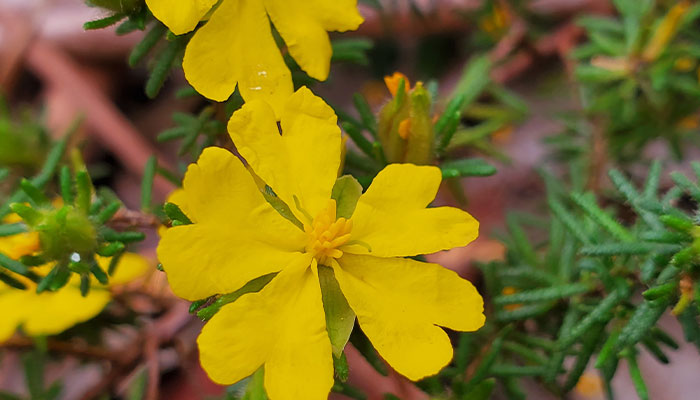
Endangered: Hibbertia spanantha. Picture credit: Vanessa McPherson and Michael Gillings.
It was first discovered in South Turramurra in 2007, when concerns were raised about the small area it occupied and how few plants there were. There are eleven plants known from South Turramurra, with a few other plants subsequently discovered in Macquarie Park and Beecroft.
The Eastern Australian Underground Orchid is one of the rarest orchids in the world. The only known occurrence in the Sydney Basin was discovered in 2020. The orchids occur at a secret location in the Lane Cove Valley, where there are fewer than 10 plants, all in an area a few meters square.
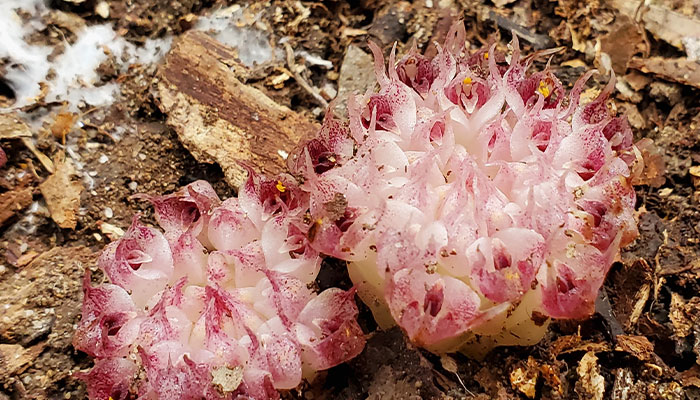
Rare: The East Australian Underground Orchid. Picture credit: Vanessa McPherson and Michael Gillings.
This orchid lives most of its life underground, where it parasitises trees. It only emerges to flower, and even then, the flowers are usually buried under leaf litter. Because it is so reclusive, it could be more common than we think, so keep an eye out for it!
These are just a few examples of the rarer and endangered species in the Lane Cove Valley. No doubt there are more to be discovered, for those who take their time to really look at the plants, animals and fungi in the area.



